Introduction
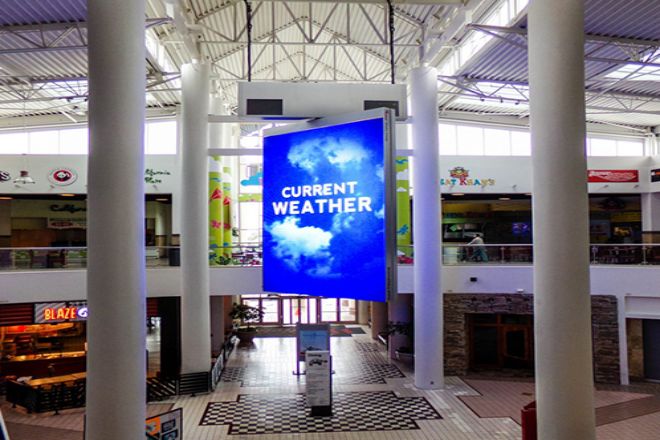
From the initial single-color LED display to the later two-color and full-color LED displays to today’s small-pitch, special-shaped LED displays, Affichage LED technology continues to make breakthroughs and innovations, providing a wealth of choices for all walks of life.
Whether it is commercial advertising, sports venues, or traffic guidance, LED displays can display information in a unique way and attract people’s attention.
This article aims to conduct a comprehensive and in-depth inventory of the types of LED displays and make an inventory of LED displays from all aspects.
1. Classified by usage environment
The application environments of LED displays vary widely. Therefore, according to their different use environments, we can divide them into three categories: outdoor LED displays, indoor LED displays, and semi-outdoor LED displays.
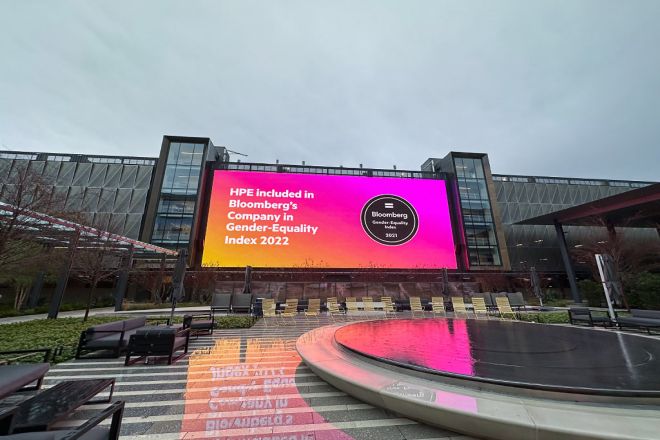
Outdoor LED display, as the name suggests, refers to LED display equipment installed in an outdoor environment. The design and production of this type of display fully take into account the complexity and variability of the outdoor environment, so it has a series of special functions and characteristics.
Tout d'abord, outdoor LED displays are usually waterproof and dustproof. In the outdoor environment, natural factors such as rain and dust are unavoidable, so the display screen must be able to withstand the intrusion of these factors to ensure normal operation.
The waterproof design allows the display to operate stably even on rainy days, while the dustproof design ensures that the clarity and brightness of the display are not affected by sand and dust.
Deuxièmement, outdoor LED displays also need to have UV protection properties. Long-term sunlight exposure will cause the surface materials of the display to age and fade and even affect the display effect. Therefore, outdoor LED displays usually use special anti-UV materials to ensure that they can maintain good display effects under long-term sunlight exposure.
En outre, the high brightness and wide viewing angle design of outdoor LED displays are also one of its important features.
Due to the strong light in outdoor environments, the display screen must be bright enough to ensure that the information is still clearly visible in daylight. At the same time, the wide viewing angle design allows viewers to clearly see the content on the display no matter which angle they stand.
It is precisely because of these special functions and characteristics that outdoor LED displays have been widely used in open outdoor places such as squares, stations, and airports.
They can not only be used to play advertisements and promotional information but can also be used to display real-time weather, traffic information, and other content to provide citizens with convenient public services.
At the same time, outdoor LED displays have become an important part of the urban landscape and advertising with their strong visual impact, adding vitality and color to the city.
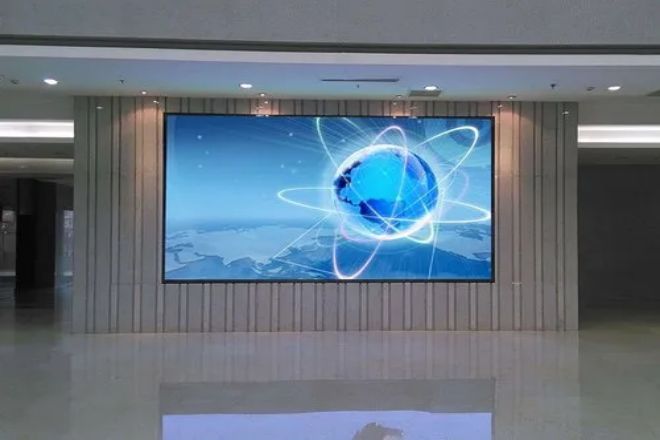
Compared with outdoor LED displays, indoor LED displays have some obvious differences in design and application. First of all, indoor LED displays pay more attention to the performance of color brightness and contrast. Since the indoor ambient light is relatively weak, the display effect needs to be more delicate and realistic to meet the needs of the audience. Indoor LED displays use advanced color processing technology to present richer colors and higher contrast, making images more realistic and vivid.
Secondly, indoor LED displays are usually installed in indoor environments such as shopping malls, conference rooms, and exhibition halls. These places also have different requirements for display screens.
For example, shopping malls need display screens to attract customers’ attention, so they usually adopt large-size, high-brightness designs, while conference rooms pay more attention to the clarity and stability of the display to ensure accurate communication of meeting content.
In addition, the exquisite picture quality and rich colors of indoor LED displays are also one of important reasons for their popularity.
Whether playing videos, displaying pictures, or presenting text, indoor LED displays can present clear and realistic picture effects, bringing an immersive viewing experience to the audience.
- Semi-outdoor LED display
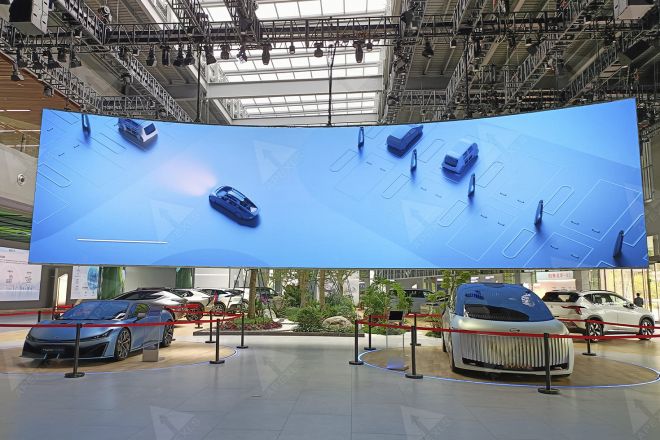
A semi-outdoor LED display is a special type of outdoor or indoor LED display. This type of display is usually installed in semi-open or semi-enclosed environments, such as open-air parking lots, balconies, and under awnings.
These environments are different from either a complete outdoor environment or a closed indoor environment, so the requirements for the display are also unique.
The design of a semi-outdoor LED display fully takes into account the characteristics of a semi-open environment. They usually have certain waterproof and dustproof functions to deal with possible rain or sanddust intrusion. At the same time, its brightness and contrast have also been specially adjusted to adapt to the characteristics of light changes in semi-open environments.
When exposed to direct sunlight, the semi-outdoor LED display can maintain sufficient brightness to ensure that information is clearly visible, and when the light is dark, it can avoid glare caused by excessive brightness.
In addition, semi-outdoor LED displays also have special requirements in terms of material and structure. In order to cope with possible temperature changes, wind effects, and other factors, this type of display usually uses more durable materials and has a special structural design to ensure that it can operate stably in various harsh weather conditions.
The wide application of semi-outdoor LED displays provides an effective solution for information display in semi-open environments. Whether it is commercial advertising, public information, or cultural promotion, semi-outdoor LED displays can meet the information display needs of various semi-open environments with their unique functions and characteristics.
At the same time, with the continuous advancement of technology and the continuous expansion of application scenarios, the performance and effects of semi-outdoor LED displays will continue to improve, bringing more convenience and fun to our lives and work.
2. Sort by the display method
- Monochrome LED display

Monochrome LED display is the most basic and simple form of LED display. It is composed of LED lamp beads of a single color, such as red, green, blue, etc., and is mainly used for simple information release and instructions.
Due to its low cost and relatively simple production and maintenance, single-color LED displays have been widely used in various public places such as streets, shopping malls, stations, etc. They are usually used to display basic information such as time, date, and temperature or as signs such as traffic instructions and safety warnings.
Although the color performance of a single-color LED display is limited, its stability and durability make it particularly good in situations that require long-term operation.
- Two-color LED display
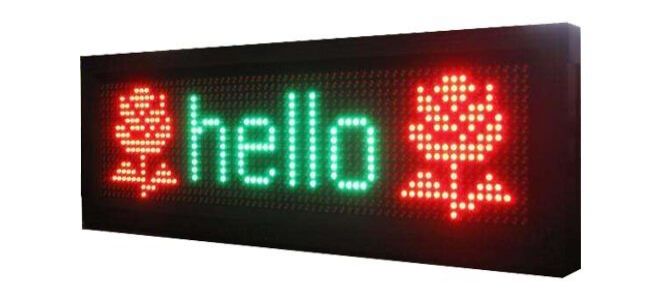
Compared with the single-color display, the biggest feature of the two-color LED display is that it combines two colors of display. This design not only enriches the form of information expression but also makes the display screen more visually appealing.
Two-color LED displays usually use a combination of contrasting colors or complementary colors, such as red, green, red, blue, etc., to enhance the recognition and attractiveness of information. They are often used in shopping mall promotions, event promotions, and other occasions where key information needs to be highlighted.
Through the combination and switching of different colors, the two-color LED display can convey information more effectively and attract the audience’s attention.
- Full-color LED display
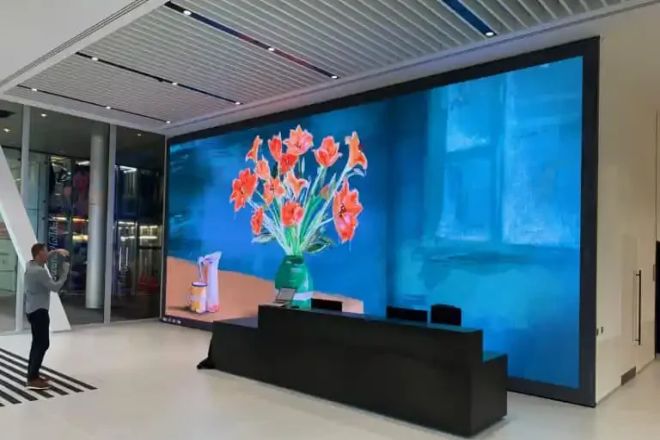
The full-color LED display is the master of LED display technology. It uses a combination of RGB three primary colors to achieve high-definition video and image playback through precise brightness and chromaticity control.
The full-color LED display has rich and vivid colors, delicate and lifelike images, and can present a variety of complex images and video content. Therefore, it is widely used in advertising, stage performances, sports events, and other occasions that require high visual effects.
Whether it is a dynamic video advertisement or a static picture display, the full-color LED display can attract the audience’s attention with stunning visual effects and enhance the brand image and publicity effect.
3. Sort by pixel spacing
According to the classification of pixel pitch, LED displays can be divided into two types: small pitch and large pitch.
- Small spacing LED display:
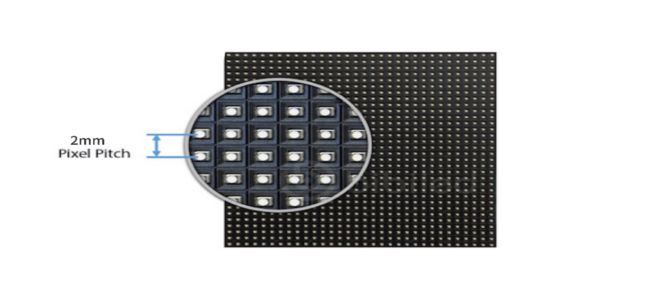
This type of display has a relatively small pitch between pixels, resulting in a higher resolution. Due to the dense arrangement of pixels, it can present more detailed and clear images, which are suitable for high-definition video display and close viewing situations. Small-pitch LED displays are widely used indoors, such as conference rooms, TV stations, shopping malls, etc.
At the same time, it also has the characteristics of seamless splicing, high refresh rate, high brightness, high contrast, etc., making the picture smoother and more vivid, and can meet various high-definition display needs.
In addition, the light-emitting chips of small-pitch LED displays are produced using high-quality materials and advanced processes, which have the advantages of long life and low maintenance costs.
- Large spacing LED display:
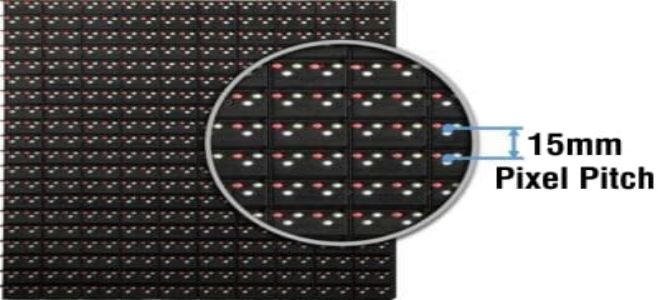
Compared with small-pitch LED displays, large-pitch LED displays have larger pixel spacing. This design allows the display to maintain good clarity when viewed from a long distance, and the visual distance is longer, such as 8 meters, 10 meters, etc. Therefore, large-pitch LED displays are particularly suitable for large outdoor billboards and long-distance viewing situations.
In addition, the large-spacing LED display has wide coverage and a large audience, and it can be installed in a higher place. The screen and the viewing angle are larger, so the advertising content can cover a larger range and have more viewers.
However, due to the large pixel pitch, its resolution is relatively low, making it suitable for situations where resolution requirements are not high.
4. Sort by shape
According to shape classification, LED displays can indeed be divided into two types: flat and special-shaped.
- Flat LED display:
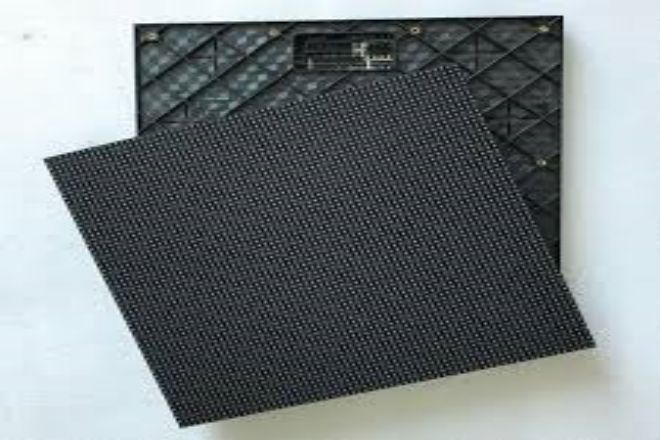
The flat LED display is the most traditional and common form of display. It adopts a rectangular plane design and is suitable for various standard installation environments. Due to its simple structure and relatively low production cost, flat LED displays occupy a large share of the market.
It is widely used in shopping malls, airports, stations, outdoor billboards, and other places to play videos, advertisements, text messages, etc. The flat LED display screen has the characteristics of high brightness, high contrast, and bright colors and can maintain a clear display effect under various light conditions.
- Special-shaped LED display:
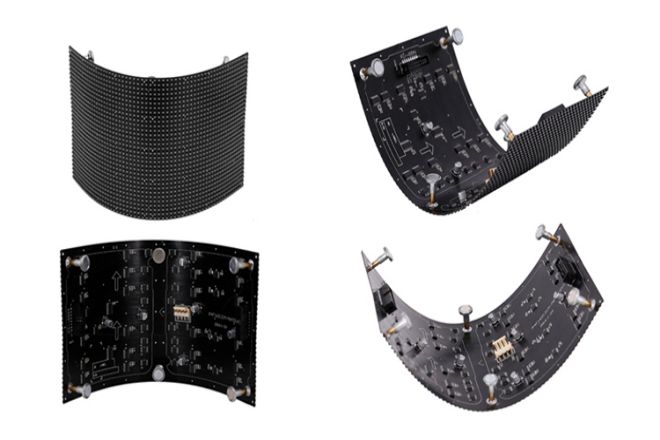
Special-shaped LED displays refer to LED displays with non-rectangular shapes, such as arcs, circles, curved surfaces, etc. This type of display can be customized according to actual scenes and needs, bringing a more unique and shocking visual experience to the audience.
Special-shaped LED displays have been widely used in creative advertising, stage backgrounds, exhibition displays, and other fields. For example, in shopping malls, curved LED displays can be fitted to walls or pillars to create a more three-dimensional and spatial advertising effect.
In stage performances, curved LED displays can be customized according to the stage shape to match the performance. The content complements each other and enhances the overall performance effect.
Conclusion
Through a comprehensive inventory of LED display types, it is not difficult to see that LED display technology has become the mainstream choice in today’s information display field with its excellent display effect, high reliability, and wide range of applications.
From outdoor billboards to indoor conference displays, from monochrome text displays to full-color high-definition video playback, LED displays meet diverse applications in different scenarios and needs with their diverse types and flexible application methods.
Finally, if you want to know more details about LED displays, veuillez nous contacter.
